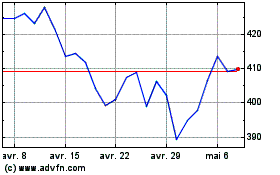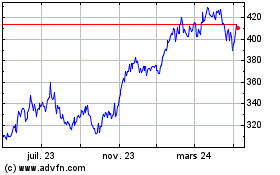By Sarah E. Needleman
False and misleading information is spreading in new ways across
social media, as people seeking to influence political campaigns or
achieve illicit goals attempt to stay ahead of platform operators
trying to stop them.
The new methods range from employing real people -- instead of
relying solely on bots -- to post messages that appear authentic
and trustworthy, to sharing fabricated images, audio and video,
researchers say.
Purveyors of disinformation are experimenting with these
techniques largely because Twitter Inc., Facebook Inc. and other
social-media companies have beefed up efforts to squash their
campaigns, though some critics want to see the companies do
more.
The companies began sharpening their focus on coordinated
campaigns intended to sway public opinion after the identification
of Russian government interference in the 2016 U.S. presidential
election. A report from a U.S. Senate committee released earlier
this month criticized U.S. tech giants for helping spread
disinformation during the 2016 campaign and called for better
coordination of efforts to prevent similar activity for elections
in 2020.
"People think it's a problem that can be fixed," says Nathaniel
Gleicher, head of cybersecurity policy at Facebook. "But we know
these actors are going to keep trying. That's the one guarantee we
have."
Lee Foster, an analyst at cybersecurity firm FireEye Inc., says
manipulators are also changing their tactics because the public has
become more aware that disinformation operations are carried out on
social media. Mr. Foster was part of an investigation into a
coordinated disinformation campaign on Facebook, Twitter and other
large social-media platforms last year believed to promote Iranian
interests.
A veneer of truth
Interest groups, governments, companies and individuals are
motivated for several reasons to spread disinformation, according
to researchers. Some are looking to promote a political agenda or
ideological position, while others want to draw social-media users
to a website so they can generate advertising or other revenue. In
some cases, the messages dispersed are merely pranks carried out
for entertainment purposes.
The results of these efforts can be significant, with the
potential to distort elections, divert attention from other
societal issues or instill fear. They can also be deadly. Last
year, more than 20 people were killed in India by mob violence
after false rumors about child-trafficking activity spread on
Facebook's WhatsApp messaging service.
Increasingly, people seeking to spread disinformation are
becoming less reliant on bots to flood platforms with messages,
having humans behind keyboards do the work instead, researchers
say. They say organizers are paying people who have large online
followings to amplify their messages without disclosing the
transactions.
Campaign organizers are also taking over dormant accounts under
new guises and encouraging people to post messages in support of
their cause, researchers say. These organizers, in many cases,
obscure their identities and intentions and can dupe users into
spreading false information through their networks.
"You have less bot activity and now people publishing multiple
times a day," says Claire Wardle, director of First Draft, a
nonprofit that supports research into disinformation campaigns on
the internet and is funded in part by Alphabet Inc.'s Google, as
well as Facebook and Twitter. "They're using other people already
very passionate about certain issues to push weaponized
content."
For example, ahead of the 2017 French presidential election, a
group of Marine Le Pen supporters sought to promote her campaign by
simultaneously posting tweets with the same hashtag and had bots do
the same, according to Ben Nimmo, head of investigations at New
York-based Graphika Inc., a social-media-analytics firm. With this
approach, people are looking to give the false impression that
their posts have gone viral organically, which can help them in
turn attract coverage by legitimate news outlets, he says.
Hashtags such as #LaFranceVoteMarine and #Marine2017 began
trending on Twitter across France, raising Ms. Le Pen's profile by
gaining coverage from French media that portrayed her supporters as
powerful and effective online.
"It was a lot more sophisticated than just turning on a bot
army," Mr. Nimmo says.
Also, rather than solely pumping out falsehoods, organizers are
mixing truth with deceptive content on the larger social platforms
-- or with inflammatory content on smaller ones that have looser
content controls such as Gab and 4chan -- to gradually build up
followers and make themselves appear more credible, researchers
say. For instance, a real photo may be posted on these smaller
sites with a highly sensationalized or misleading caption to
inflame social divisions.
"Gab allows all protected political speech, no more, no less,"
said Andrew Torba, chief executive of the social network, in a
statement. Representatives for 4chan didn't respond to a request
for comment.
Fake images and audio
So-called deep fakes -- phony images, video or audio created
with artificial intelligence -- are another new tool used to
deceive social-media users, researchers say. These differ from
already common "cheap fakes" -- deceptive alterations of real
content, such as the doctored video of House Speaker Nancy Pelosi
(D., Calif.) that went viral on YouTube and Facebook in May.
"Deep fakes are worrisome because they are very hard to detect
by the lay public and journalists alike," says Joan Donovan,
director of research at Harvard University's Shorenstein Center on
Media, Politics and Public Policy. "Looking forward to 2020, these
newer tactics are going to be difficult to manage and defend
against."
Another concern, says FireEye's Mr. Foster, is that people will
claim video or audio of them acting badly is a deep fake, even when
that isn't the case. "Their mere existence will provide plausible
deniability for the actions or comments that real people do make,"
he says.
Such new techniques are coming into play as coordinated attacks
are expanding geographically, originating from 70 countries this
year as of September, up from 48 in 2018 and 28 in 2017, according
to a study by researchers at Oxford University. The findings also
show that 47 countries have used state-sponsored groups to attack
political opponents or activists so far this year, nearly double
the number from last year.
Platforms fight back
Facing mounting pressure from governments and public outcry,
social-media companies have worked to thwart platform manipulation.
Twitter and Facebook, for example, have suspended tens of millions
of accounts affiliated with disinformation campaigns across the
globe, while Reddit Inc. this year said it removed more than 10.6
million accounts with compromised login credentials.
The companies have also ramped up hiring of staff dedicated to
spotting coordinated attacks. Facebook said it now has 30,000
employees focused on user safety and security, three times as many
as it had 18 months ago. But liberal- and conservative-leaning
politicians and interest groups as well as free-speech advocates
have panned social-media companies in recent years for either
dragging their feet on content-moderation controls or going too far
to alter genuine discourse. In a speech at Georgetown University
earlier this month, Facebook Chief Executive Mark Zuckerberg said
the company must continue to stand for free expression even though
it has worked to remediate concerns about misinformation and hate
speech on the social network.
Social-media companies also have been sharing data they have
collected on coordinated attacks with researchers. Some companies
have also created deep-fake videos to help researchers develop
detection methods. Facebook earlier this year teamed up with
several partners including Microsoft Corp. to launch a contest to
better detect deep fakes. Mr. Gleicher of Facebook says the spread
of false and misleading information on social media is too
difficult for any one company to tackle alone.
That said, companies need to be cautious when they share
information about coordinated attacks with the public to avoid
giving people insight into how to game the system in the future,
says Yoel Roth, head of site integrity at Twitter.
Social-media firms also don't want to inadvertently inflate the
magnitude of manipulation campaigns by disclosing too many details
about how they occur, Mr. Gleicher says. "Sophisticated actors try
to make themselves look more powerful than they are," he says.
Ms. Needleman is a Wall Street Journal reporter in New York. She
can be reached at sarah.needleman@wsj.com .
(END) Dow Jones Newswires
October 24, 2019 19:17 ET (23:17 GMT)
Copyright (c) 2019 Dow Jones & Company, Inc.
Microsoft (NASDAQ:MSFT)
Graphique Historique de l'Action
De Mar 2024 à Avr 2024

Microsoft (NASDAQ:MSFT)
Graphique Historique de l'Action
De Avr 2023 à Avr 2024
